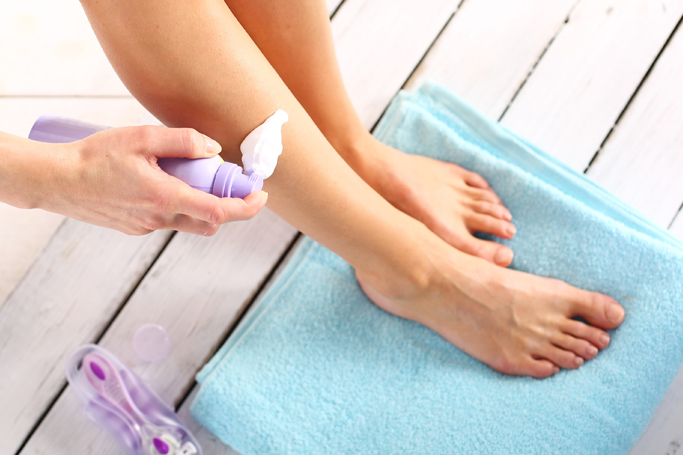How to Treat and Avoid Ingrown Hairs This Summer
It’s shorts and skirts weather! Here are some tips and advice for banishing unsightly and irritating ingrown hairs for good.
6 August 2020
Maebelle

All Credits: PA
With the weather heating up in the UAE...
Many of us will be thinking about switching out our jeans and trousers for shorts, dresses and swimwear. But if you’re sporting pesky ingrown hairs on legs, the thought of taking your tights off can make you cringe with horror.
Although they’re annoying to deal with, ingrown hairs are generally not harmful – so there’s no need to panic if you spot one for the first time.
However, there are actions you can take to limit or avoid them. Also, knowing how to treat ingrown hairs can be important in order to help them heal as quickly as possible, and avoid any risk of further irritation or infection occurring.
Here, we’ve rounded up some handy tips and advice for beating the bumps.
Why do ingrown hairs happen?
Ingrown hairs are simply body hairs that have curled round and grown back into your skin, instead of rising up from it.
They can often look like red, irritated pimples, but if you look closely, you can often see the hair outline underneath the skin surface.
Ingrown hairs can be a particular problem if you have curly hair, or they’re growing in areas where you’ve recently shaved, as the hair that grows back has a sharper tip that can pierce back into the skin.
Common areas of concern include the legs, armpits and intimate area in women, as well as the chin area for men.

What should I do if I spot one?
The British NHS says that, where possible, you should leave an ingrown hair to heal, as quite often they will resolve themselves without any intervention.
It’s tempting to pick at the area to try and remove the hair, but this can encourage bacteria to enter the skin, increasing your chance of an infection.
Often an ingrown hair may also be surrounded by what looks like a white pus-filled spot, where the hair follicles have become inflamed. This is known as folliculitis. It’s advisable not to scratch or squeeze at the spot as you might make the situation worse.
If the hair is lying at the surface of the skin (you should be able to see it if this is the case), the NHS says that you can use a pair of sterile tweezers to gently tease it out. But if it’s deep under the skin’s surface, don’t try digging at the area as this will likely cause further aggravation.
The first course of action is to try not shaving for a few days and see if it gets better by itself. The NHS says a mild antiseptic, such as tea tree oil, applied to the affected area can also help.
If the issue persists and you have particularly bothersome ingrown hairs that are not healing, speak to your GP. They may be able to remove the ingrown hair using a sterile needle.

How can I avoid them?
The easiest way to stop ingrowing hairs in their tracks is to put down the razor. If you don’t fancy letting your leg hair roam free though, you could try other hair removal methods such as depilatory creams, waxing or laser hair removal.
If shaving is your method of choice, there are things you can do to reduce the chances of ingrown hairs plaguing you all summer.
Ahead of shaving, make sure you wet your skin with warm water and use a cream or gel for lubrication. Never shave dry skin!
Use a sharp, good quality, clean single-blade razor and shave in the direction of the hair growth, rather than against it.
Finally, using fewer strokes means less irritation and you should also make sure to rinse the the razor every between every stroke.

















